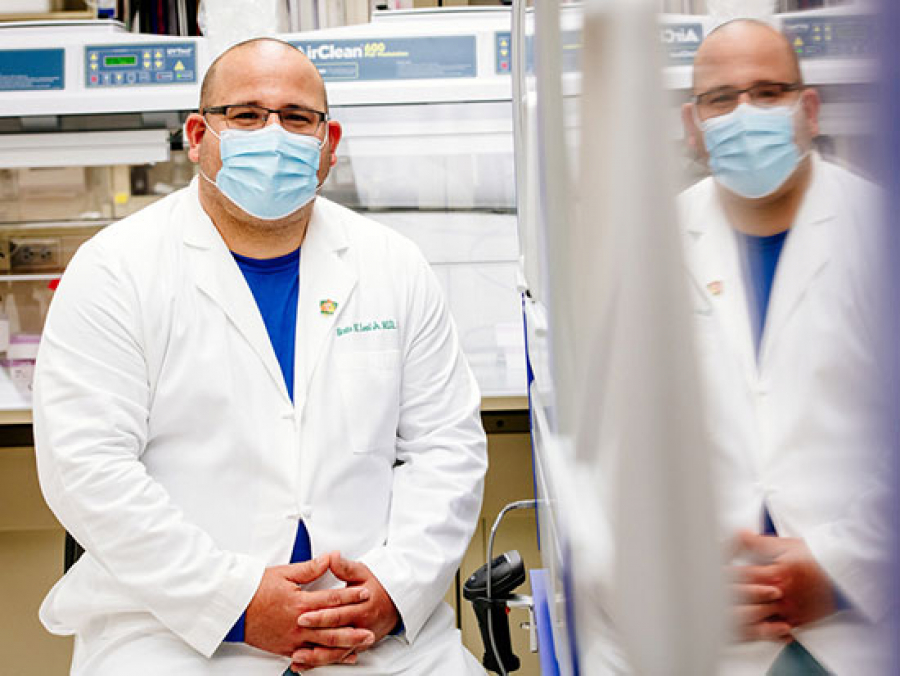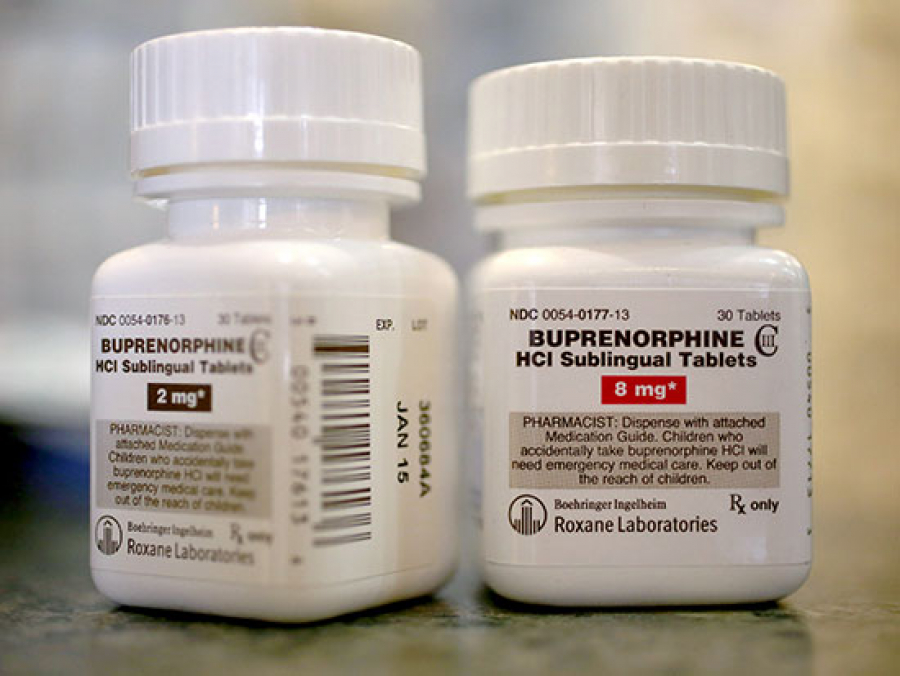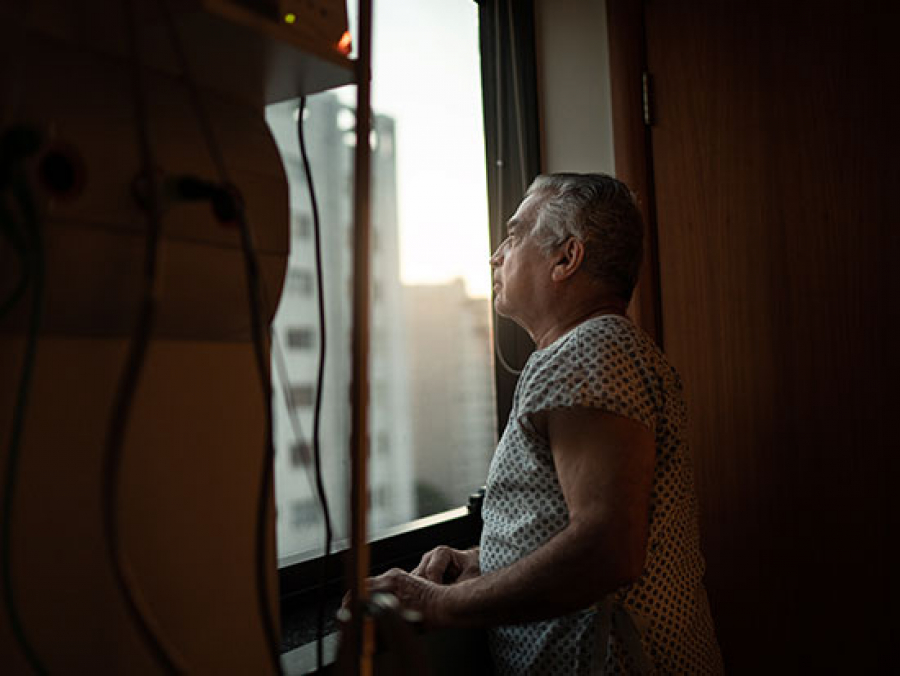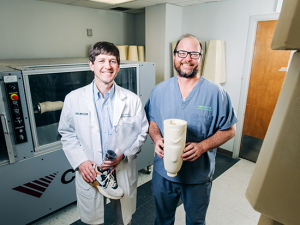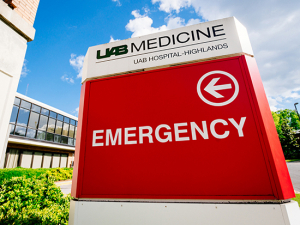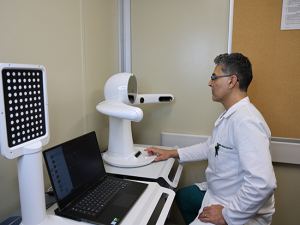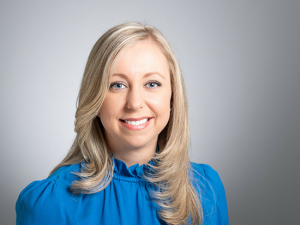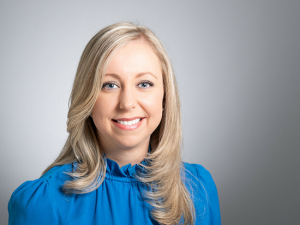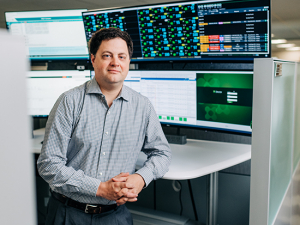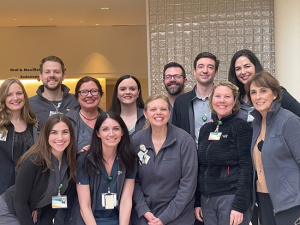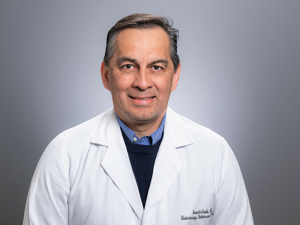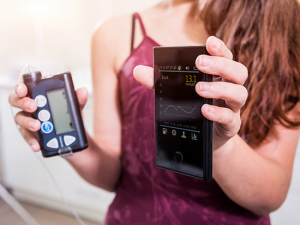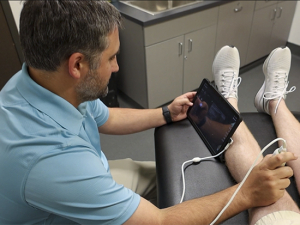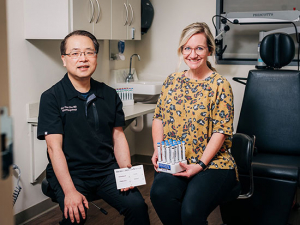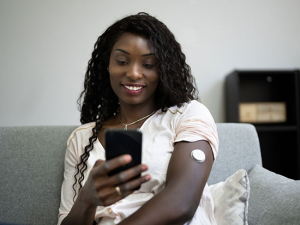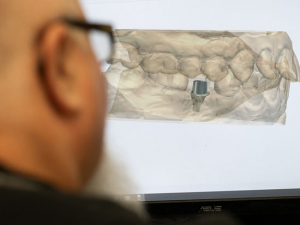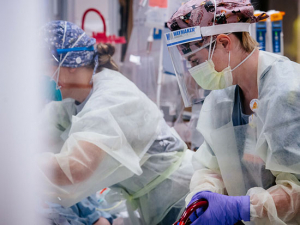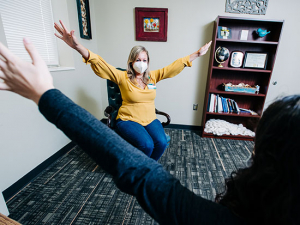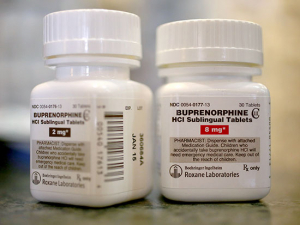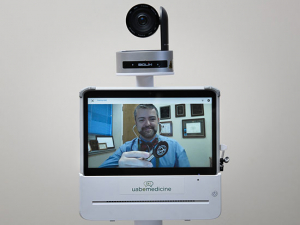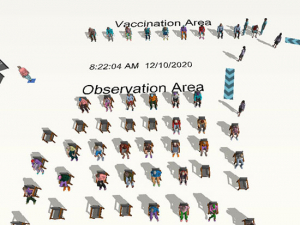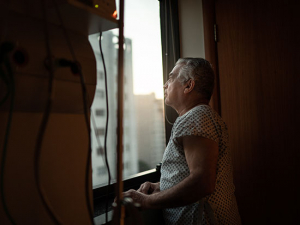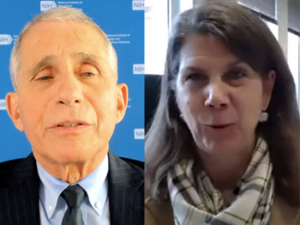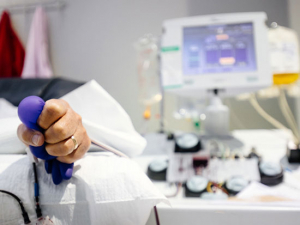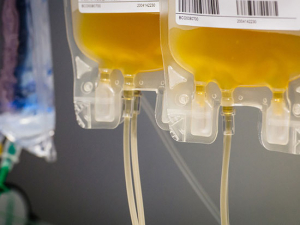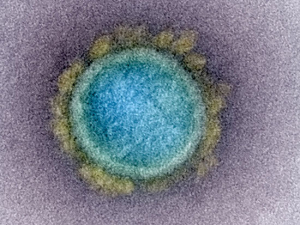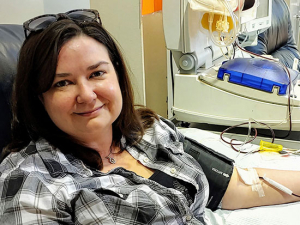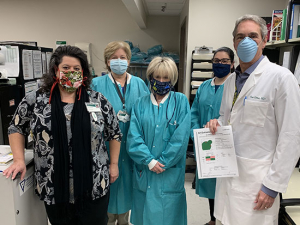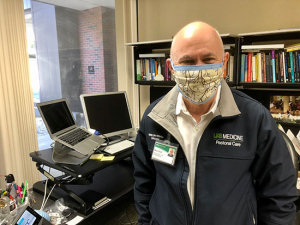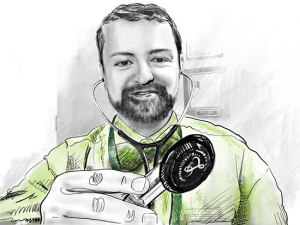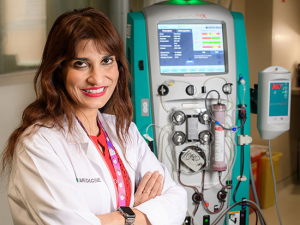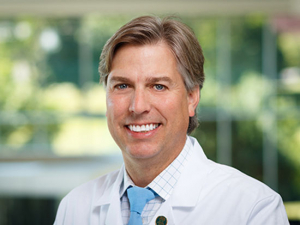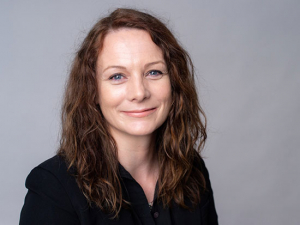 |
| From left: nursing student Shana Rutkowski, Teena McGuinness, professor of nursing, and Jim Raper, associate professor of infectious disease. |
The United States is home to an estimated 1.2 million HIV-infected people, and the Deep South has become ground zero in the fight against the disease. UAB’s 1917 Clinic has been on the front lines of the epidemic since 1987, and the July 13 edition of the journal Science recently highlighted Birmingham and the clinic among 10 cities nationally excelling in efforts to combat the disease.
The Science article praised the 1917 Clinic for its cutting-edge research, pivotal clinical trials and the care it has provided to help patients overcome the stigma of HIV by getting them to stay in treatment and on their prescribed medication.
The clinic has 2,000 active patients with more than 90 percent on treatment for HIV/AIDS. A remarkable 71 percent of those in treatment now have an undetectable virus. “That is a striking statistic,” says Michael Saag, M.D., professor of medicine and director of the UAB Center for AIDS Research.
“People in the health-care field work hard every day, and those doing it the right way are putting patients first and creating patient-centric approaches that improve outcomes,” Saag says. “We’ve been doing that for 25 years here in this clinic. When a journal such as Science comes in from the outside and profiles our clinic as one that’s providing care in an exemplary way, it’s very validating. It helps people feel good about what we’re doing and encourages us to continue fighting and doing good things.”
|
Poverty is the “overwhelming driver” of HIV infection, and its prevalence in the black community is the reason infection rates among that population are high. Many poor people contract HIV due to lack of health care and the close ties between poverty and drug addiction. With more infected people living in poor communities, the likelihood of passing it to fellow members is higher. Those living in poverty also are more likely to be focused on day-to-day survival, which drives risky behavior. |
UAB and Birmingham could have taken another route 25-plus years ago when AIDS began to spread throughout the country; it’s a thought not lost on Saag.
Initially, the AIDS epidemic was viewed as a disease exclusively of white, economically secure gay men in places like New York and San Francisco. That’s no longer the case. African-Americans in the South now account for 43 percent of the country’s HIV-infected people, according to the Science article.
Saag shudders to think what that number would be today if the leadership of UAB and Birmingham had chosen not to respond to the disease in a way that has substantially altered outcomes.
“When the disease surfaced here, the decision could have been made to ignore it, and in a lot of places that was the case,” Saag says. “Back in those early days, people were coming here from urban areas where they had been infected. The local community docs didn’t know what to do because the disease was so new, so they sent patients here. We could have been a city that did nothing, but we responded in a proactive way that enabled us to be very effective at putting the brakes on a global pandemic here locally.”
 |
| Pharmacists work in the pharmacy at the 1917 Clinic. |
UAB has been involved in the research and treatment of patients for almost three decades, and the newest, most effective treatments have been made available early for 1917 Clinic patients. These treatments changed the life expectancy and quality of life for those infected and kept the disease from expanding at an even faster rate.
“If we hadn’t have been involved in the treatment and research, those treatments would have been delayed here another five or six years,” Saag says. “That would have meant more people dying and more transmission of the virus. It could have gotten out of control.”
Why the South?
Poverty is the “overwhelming driver” of HIV infection, and its prevalence in the black community is the reason infection rates among that population are high, Saag says.
Many poor people contract HIV due to lack of health care and the close ties between poverty and drug addiction. With more infected people living in poor communities, the likelihood of passing it to fellow members is higher. Those living in poverty also are more likely to be focused on day-to-day survival, which drives risky behavior, Saag says.
| AIDS symptoms also may be ignored or hidden more in the black community due to cultural differences in regard to tolerance for homosexuality, Saag says. Being gay can be taboo in black and white communities, but especially so among blacks — and doubly for black churchgoers. Gay black men often hide their orientation, living publicly in heterosexual relationships while secretly having gay sex “on the Down Low,” which further spreads the disease. |
AIDS symptoms also may be ignored or hidden more in the black community due to cultural differences in regard to tolerance for homosexuality, Saag says. Being gay can be taboo in black and white communities, but especially so among blacks — and doubly for black churchgoers. Gay black men often hide their orientation, living publicly in heterosexual relationships while secretly having gay sex “on the Down Low,” which further spreads the disease.
Stigma, then, is a major obstacle to enrolling patients in care, and it can come in wide variety — from direct prejudice, certain social or racial groups or even internalized.
“Those are barriers to people wanting to get tested,” Saag says. “Fear inhibits them from talking about their status, seeking care or taking medicines in a public place. Fear of being outed with HIV. Those are some of the fears we have to address.”
Most disturbing, patients who don’t know they are infected represent 25 to 40 percent of those with AIDS in the United States, and they are responsible for more than 60 percent of new infections each year. A key priority of the U.S. National AIDS Strategy is to test everyone to identify those infected, treat them so they can live a near-normal lifespan and reduce the spread of infection to others. UAB Hospital has conducted HIV screening for every patient treated in its emergency department since 2011.
Community of care
Still, public education campaigns in hard-hit communities are needed to get more people tested, and programs that link newly diagnosed patients to treatment also are needed.
The UAB Center for AIDS Research, under the guidance of Jalie Tucker, Ph.D., professor and chair of health behavior, has directed numerous projects reaching into the community to educate and offer counseling and testing.
The 1917 Clinic gives help to those who seek treatment and hope that those barriers can be overcome. Though there still is no cure for HIV/AIDS, treatments are available that ensure those infected can live a full, high-quality life, including the poor.
Health disparities between those with the means to afford care and those who can’t differ greatly for most any disease, including heart disease, diabetes and cancer. Every outcome is worse for poor people in the United States than for those who have means. But research shows HIV is an exception, and the 1917 Clinic is part of that proof.
The average CD4 white-blood-cell counts (the cells HIV destroys) of UAB’s clinic patients is more than 500, which means their immune systems are approaching normal.
“The majority of people we are seeing right now have a great chance to live another 50 to 60 years,” Saag says.
Saag says the community of people involved in the clinic — the doctors, nurses, staff — all play crucial roles in providing the high-quality standard of care their patients need.
“These folks are extra special, and a lot of them came here at a time when it wasn’t en vogue to be a part of HIV,” Saag says. “They did it as a professional commitment and a personal challenge to help people who were otherwise disenfranchised. They’re extremely good-hearted people who are very talented and work hard.”
Saag says many others deserve recognition for the clinic’s success. He credits UAB’s support of the clinic and the encouragement to think outside the box and be creative as a driving force. Birmingham also has embraced the clinic’s mission, Saag says, which is a key factor in its success.
“Many people in the city are proud of the work we do here and the recognition we’ve received,” Saag says. “It shines a light very favorably on Birmingham — the type of place this is to live and how positive are the people who live here. And that wouldn’t be possible without the funding UAB has received from the state and community that helps us in our daily efforts to combat this disease. It truly helps us treat the whole patient, and that is vital in our efforts to combat this disease.”
Volunteer opportunities are available for anyone wanting to help at the 1917 Clinic. Donations can be made to the 1917 Clinic Development Fund, which helps develop programs, especially on testing and care initiatives. Donations also can be made to the 1917 Clinic Patient Assistance Fund, which helps pay for medicines as patients are waiting to be accepted into treatment programs.
For more information on these opportunities, visit www.uab.edu/medicine/1917clinic/.